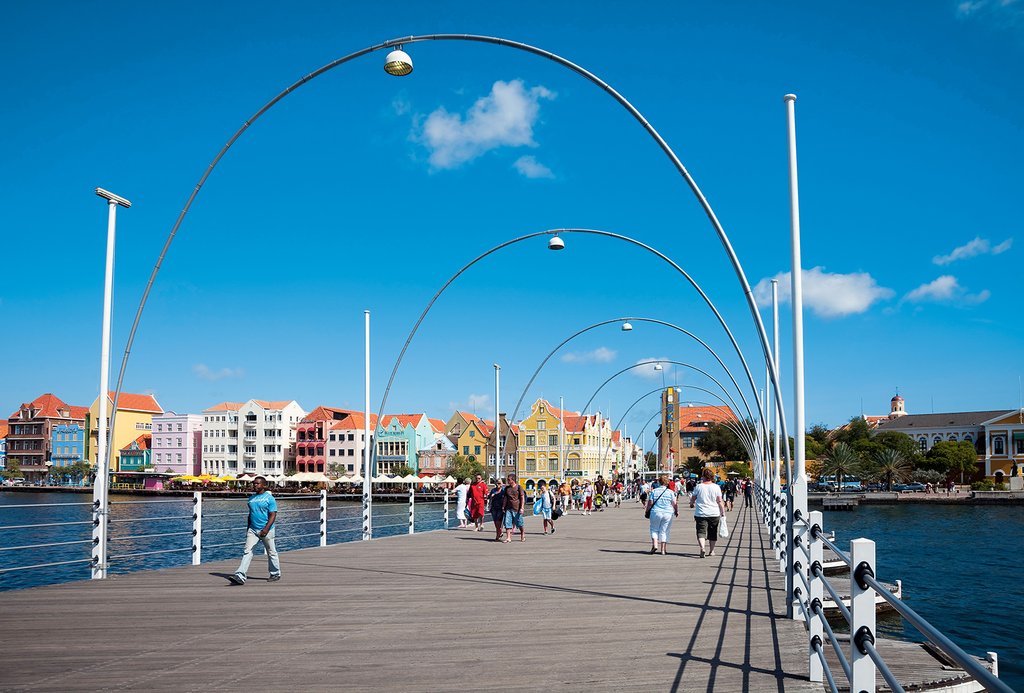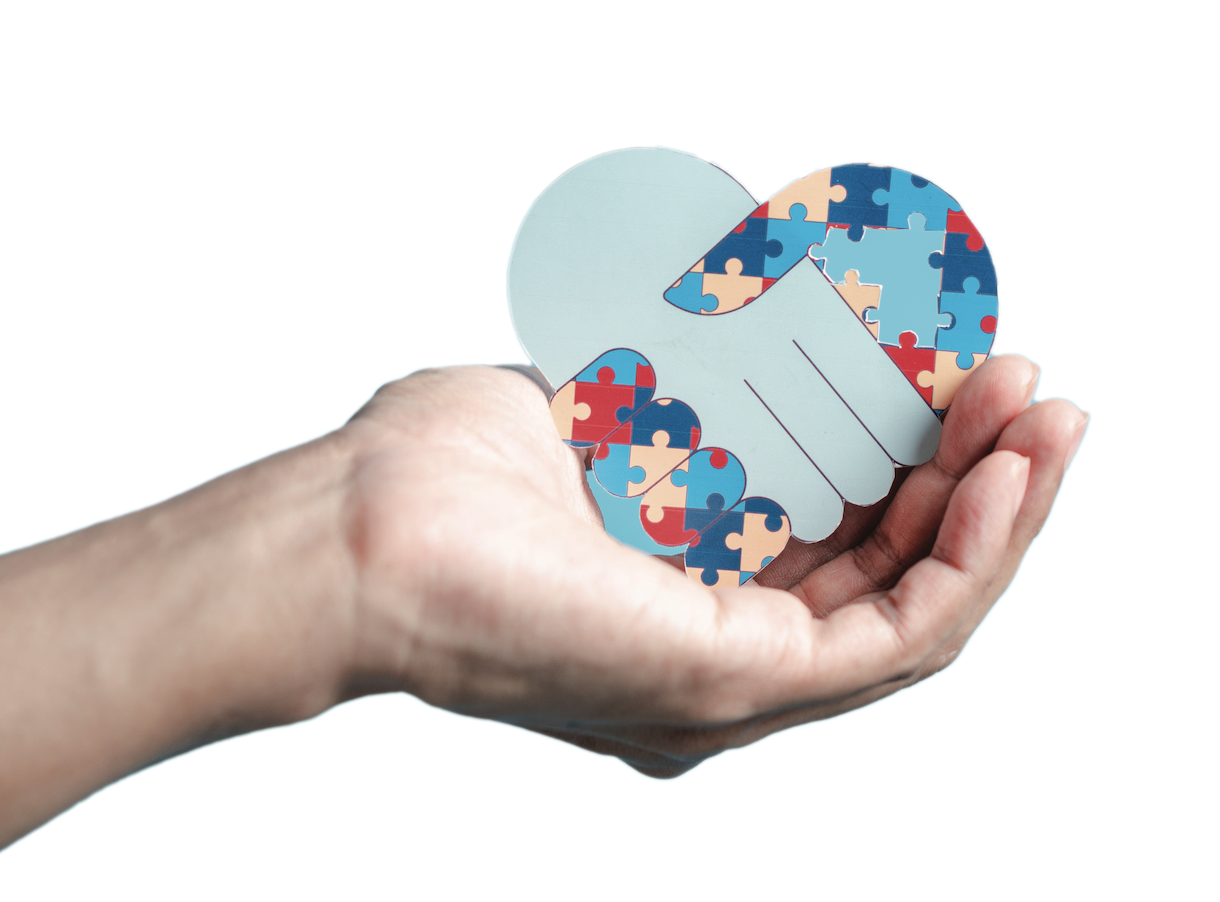By Lola Augustine Brown
I was told that iguana tastes like chicken. I found it gristly and chewy, though it was covered in a delicious spicy tomato sauce, but you can try it for yourself at Jaanchie’s, a famous little restaurant on the Caribbean island paradise of Curaçao. Their iguana soup is a specialty.
Fortunately, I’d also ordered grilled fish and garlic shrimp, so I soon forgot the sample of lizard and washed it away with a delicious glass of awa di lamunchi (a Curaçao classic, limeade, served pretty much everywhere on the island).
Jaanchie’s has been operating in Westpunt (West Point) since 1936 and is a local institution. The third-generation owner, who must be in his 70s, is a walking menu, sitting beside you to see what sort of things you like and then making suggestions based on what local meat and fish he has. Hundreds of golden orioles flit from feeder to feeder right next to you in the open restaurant, which is decorated with vintage memorabilia from the island. Though the place is popular with visitors, eating there felt like an intimate treat.
We’d driven the quiet roads to Westpunt early that morning to explore the wilder part of the island, which is home to stunning beaches. On the way, we’d stopped to watch a huge flock of wild flamingos preening in a lagoon and visited famous local artist and former Miss Universe contestant Nena Sanchez, whose art gallery is located in a beautiful restored plantation house. I regretted not buying one of her gloriously bright tropical prints, especially when I kept seeing her work elsewhere in Curaçao throughout my stay.
SUN AND SAND

Photo: Curaçao Tourism Board.
Curaçao’s beaches are everything we could have hoped for. The sand is like gold-tinged sugar, and the ocean that laps the shore is a dazzling turquoise. The island has two types of beaches: those you pay to visit and those you don’t. Entry to the first sort isn’t much, anywhere from $10 US per car to $6 per person (US currency is commonly accepted), and all you need take to those groomed and very clean beaches is a towel, as everything else is there—from restaurants, bars, and dive shops, to sunning beds and spas right on the shoreline where you can be massaged while watching and listening to the surf lap the sand. The free beaches are also gorgeous, but you’ll need to take everything with you for the day, as there aren’t usually many facilities.
The ocean is warm, clear, and teeming with life. Swimming in those waters is bliss, and you can just walk straight in off the beach to scuba dive and snorkel. I didn’t get to try scuba diving on this trip, but at my hotel I spoke with a couple of guys from Ottawa who had travelled to Curaçao with their wives for a third time because the diving was so good there. “The water is warm with good visibility,” Lonnie Howard told me. “Yesterday there was an eagle ray on the dive, and huge moray eels. The health of the reef is pretty good here, and the dive operators are top-notch.”
There are many ways to get out on the water—sunset cruises, fishing trips, glass-bottomed boats…. If you’re feeling brave, you can even take a fly-board out, which is a water-jet-powered hover-board that looks like a lot of fun—though perhaps better suited to people more fit than I. If you wanted to, you could spend a week in Curaçao just enjoying the sea and sand, but if you did, you’d be missing out, because there’s much more to the island than that.
RICH HISTORIES

In the capital, Willemstad, is Museum Kurá Hulanda, which explores, in addition to the kingdoms of West Africa, slavery both on Curaçao and in the United States. Taking a tour through the exhibits with museum guide Rudolf Allie was an emotional experience.
As he picked up brands used to sear ownership onto the backs of slaves and tiny shackles that were used on child slaves—I saw trunks full of those—I had no idea how to respond. “Some people break down in tears when I explain what happened to slaves here,” he says. “We have to stop and wait.”
The museum has a replica deck of a slave boat set up that you can climb down to and see just how little space the slaves had, chained together in the dark on shelves one metre (3 feet, 3 inches) apart. One room contains both shudder-inducing Ku Klux Klan robes and the ceremonial robes of Haile Selassie, Emperor of Ethiopia from 1930 to 1974. In a yard outside, Allie demonstrated how a bell was rung to announce the lashing of a slave, explaining that all slaves were forced to watch each instance of brutality as a lesson and warning. I left the museum uneasy but educated.
The capital’s prosperity is evident in the brightly painted historic buildings that have made Willemstad a UNESCO World Heritage Site. Downtown you’ll find plenty of shops to browse in and pleasant places to sit and grab a meal or a nice cold beer, such as the large terrace of Plein Café Wilhelmina overlooking Queen Wilhelmina Park. In the park are two huge art installations, one spelling out curaçao and the other dushi (which means sweet, nice, or good in Papiamentu, a language that has elements of Creole, Spanish, Portuguese, Dutch, English, and French—among others—and is spoken in Curaçao, Bonaire, and Aruba).
In Willemstad you’ll also find the oldest synagogue in the Americas, Mikvé Israel-Emanuel Synagogue. Originally formed in 1651, with a new synagogue built in 1732, it has a sand floor, rich woodwork, and stunning brass and glass chandeliers that are lit with candles for special occasions. The attached museum has a huge collection of Jewish artifacts, including a large array of circumcision tools and one of the oldest known copies of the Torah, which dates from 1322.
Willemstad is divided into two halves. Most of the attractions are in Punda, which translates to The Point, and if you cross Queen Emma Bridge to Otrobanda, which translates to Other Side, you’ll find a less developed part of the city where more locals are to be found shopping and hanging out. Queen Emma Bridge, more commonly referred to as the Floating Bridge, is in fact a long pontoon that swings to one side to let ships in and out of the harbour. When the bridge is open, free passenger ferries are available to get you across. At night, the bridge is lit up with rainbow colours and is very pretty.
DELICIOUS TREATS AND LOTS OF MEAT

Then it was on to the Floating Market, set up harbourside by Venezuelans who sail 65 kilometres (40 miles) across the sea to Curaçao to sell their produce because they make more money here than they would selling it at home. At first glance, the market looks like any other—a long line of stalls selling stuff—but walk across the bridge behind the stalls and you see a brightly painted boat moored behind each stall where the vendors sleep at night. Despite being such a touristy spot, this is where the locals shop for their fruits and vegetables because the prices are much better than those in the supermarkets.
Incidentally, despite the weak Canadian dollar, I found the prices in Curaçao quite reasonable for goods in the supermarket and at local shops. If you were to rent a place with a kitchen, you could have a fairly inexpensive vacation. The only expensive thing in Curaçao is the cost of a taxi—renting a car is a much better option (one taxi journey to a golf course or beach can cost as much as renting a car for the day). Driving on the island is easy and the roads are quiet.
You’ll also find plenty of stores to browse in downtown Willemstad, selling everything from designer clothes to souvenirs to tablecloths (in fact, there’s a whole store devoted to tablecloths). Curaçao has a bit of a smoothie obsession, and stopping for one at the truck parked by the Old Market is a great way to cool off. A tip, though—unless you have a really sweet tooth, ask for half the sugar in your smoothie.
On my first evening on the island, I had an excellent steak at Restaurant & Café De Gouverneur, a stately looking restored historic property on the Otrobanda waterfront. I sat out on the balcony overlooking the famous buildings along the harbour, watching the sky turn pink as I ate; as it got dark, the rainbow lights of the Floating Bridge came on. All the while, I was serenaded by music from a three-day singing contest along the water.
The next night, I had steak again, but this time at the seriously cool Avila Beach Hotel’s Blues Bar & Restaurant, which sits out over the ocean, accessed by a pier. It was Thursday night, which meant fantastic live blues music after 8, but before it began, I devoured a mixed-grill pincho (a traditional Spanish skewer of meat), pulling big chunks of steak, pork, chicken, and spicy chorizo off the skewer and loving every bite.
I’m not such a carnivore at home, but the steaks on Curaçao were excellent—shipped from Argentina, I was told—so my last big meal on the island was another steak, at the high-end Italian steakhouse Fuoco on Mambo Beach Boulevard (known simply as the boulevard), a trendy district with beach bars, shops, and eateries. Every morsel was fantastic and the garlic mash, creamy and delicious. After my meal, I sat on the beach, watching the sun go down over the ocean while children played in the sand and younger people congregated at bars right on the beach. Every part of my trip to Curaçao was a delight, and the relaxed atmosphere and fun, friendly people contributed to that greatly.
Touring the island, you’ll find an abundance of snack bars, where outside seating surrounds a (usually) barred restaurant front. There you’ll see locals enjoying a beer and a sandwich, and these are open late into the night. After dark, there are lots of food trucks—ubiquitous on Curaçao for many years, long before they were trendy elsewhere—where you can buy chicken, steak, pork chops, or a mixed grill, served with either fries or bread. The food trucks operate until 5 a.m.—or later. You won’t go hungry on Curaçao: there’s always somewhere to grab a bite.
FLORA AND FAUNA
During my stay, I saw magnificent birds on the island. There were bright-green parrots, pelicans, kestrels, and of course those flamingos. The landscape is rather arid, with impressive cacti standing tall in gardens and in the wild. There are no plantations growing sugar cane as in days gone by; in fact, very little is grown on Curaçao.
What does grow really well on the island is the aloe vera plant. I spent an interesting hour out at Ecocity Projects, where aloe is grown to make aloe-based health and beauty products. I learned about the healing properties of various parts of the aloe plant, tasted a piece of the flesh (kind of like slimy cucumber, but I liked it much better than iguana!), and drank the juice (a little like apple-cider vinegar).
While I was enjoying my tour, a group of retired Canadian firefighters turned up on ATVs, whooping and hollering and looking like they were having one heck of a time. You can visit the aloe plantation as part of an ATV tour of the island, which seems like a fun way to explore.
There is a lovely garden to visit: Dinah Veeris’s Botanic and Historic Garden Den Paradera, where local herbs are grown and the local superstitions and lessons about the herbs abound. There’s plenty of shade in the garden, and it’s a sweet place to wander for a while.
Worried about the loss of traditional healers on Curaçao, Veeris began studying at first with her grandmother and then other elders. When she became a healer in the ’90s, she says, people laughed at her. “Nobody could understand why I’d quit my job to do this,” she says, “but now I’m always busy, and even doctors send people to me.” You can buy herbs, oils, and teas at the garden, and Veeris is happy to suggest what might help whatever ailment or concern you have. One of her most popular products is her slimming tea, which sells so quickly that she has trouble keeping it in stock.
I loved everything I’d seen during my stay there and still felt that I could return and enjoy a completely different trip, because there was so much I hadn’t done. Yet.
STAY YOUR OWN WAY Visitors have lots of different choices when it comes to accommodations in Curaçao. If you’re a night owl who loves to dance the night away on a moonlit beach, then staying at one of the island’s resorts would be a great choice. I’m more of a “tucked into bed with a book by 10” person, even on vacation: the Acoya Hotel Suites & Villas was just perfect for that. My spacious villa had a kitchen bigger than the one I have at home, a secluded terrace to relax on, a stimulating rainwater shower, and a comfortable bed. The temperature in Curaçao stayed steady at 30°C (86°F) every day I was there, with a light breeze making the heat quite bearable. Photo: Curaçao Tourism Board/Acoya Hotel Suites & Villas |





 Acoya’s poolside restaurant served up a tasty—and interesting—breakfast (curried chicken with a croissant on the side? Why not!), and the coffee was served with condensed milk. There’s also a bar beside the gorgeous pools, and just beyond, a lake filled with turtles and fish—the odd iguana swims around, too, in the afternoons. It was peaceful and luxurious. I didn’t book with Air Canada Vacations, but the couples I met from Ottawa did, and their flight had been an easy five hours direct from Montreal.
Acoya’s poolside restaurant served up a tasty—and interesting—breakfast (curried chicken with a croissant on the side? Why not!), and the coffee was served with condensed milk. There’s also a bar beside the gorgeous pools, and just beyond, a lake filled with turtles and fish—the odd iguana swims around, too, in the afternoons. It was peaceful and luxurious. I didn’t book with Air Canada Vacations, but the couples I met from Ottawa did, and their flight had been an easy five hours direct from Montreal.


